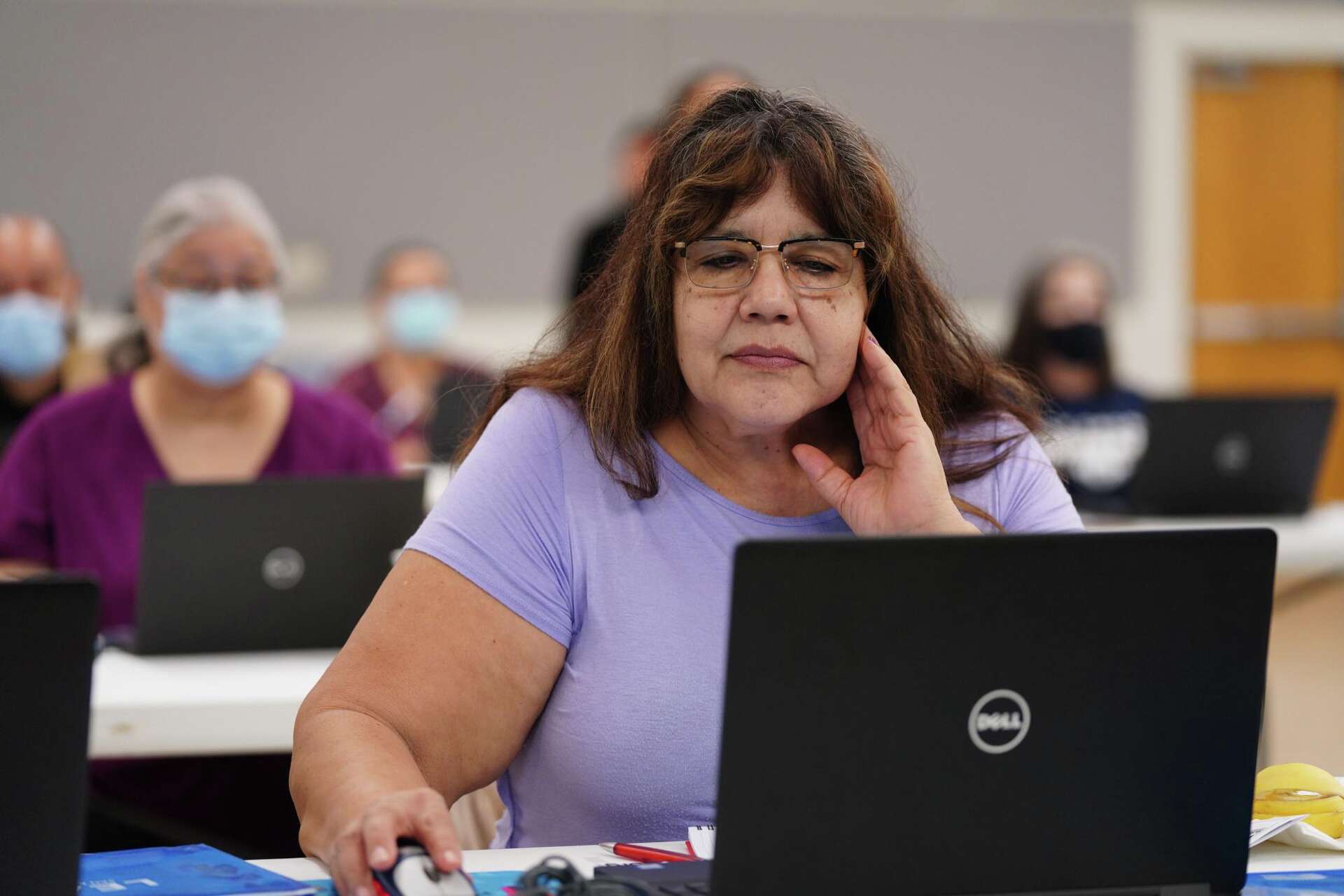Bexar County partnership with Spectrum leads to 12,000 rural homes connected to fiber broadband network – Texas Public Radio | TPR

Report on the Bexar County Broadband Expansion Initiative and its Contribution to Sustainable Development Goals
Project Overview and Scope
A public-private partnership has been established between Bexar County and Spectrum to expand critical digital infrastructure, directly addressing several United Nations Sustainable Development Goals (SDGs). The initiative aims to construct a fiber broadband network, providing reliable, high-speed internet connectivity to over 12,000 residences in previously underserved areas. This project is a significant step towards building resilient infrastructure and fostering inclusive communities (SDG 9, SDG 11).
- Objective: To eliminate the digital divide by providing dependable gigabit internet, mobile, television, and voice services.
- Targeted Communities: The expansion focuses on rural and suburban areas, including Von Ormy, St. Hedwig, Converse, Somerset, Atascosa, Adkins, Sandy Oaks, Macdona, Helotes, Schertz, Cibolo, and Selma.
- Strategic Venue: A press conference announcing the project’s completion was held at Bibliotech South, Bexar County’s all-digital public library, underscoring the initiative’s connection to education and information access.
Financial Framework and Partnership for the Goals (SDG 17)
The project’s funding model exemplifies a successful collaboration between public and private sectors, a core principle of SDG 17 (Partnerships for the Goals). This partnership leverages government funds to stimulate greater private investment in essential community infrastructure.
- Public Funding: In November 2023, Bexar County approved an allocation of $25 million from the American Rescue Plan Act (ARPA). Ultimately, $11.8 million of these funds were utilized for the project.
- Private Investment: Spectrum committed a substantial investment of $46.6 million, significantly amplifying the project’s reach and impact. This investment is part of Spectrum’s broader multi-year rural construction initiative, which aims to invest over $7 billion nationwide.
Alignment with Sustainable Development Goals (SDGs)
The Bexar County broadband initiative makes direct and measurable contributions to multiple SDGs by addressing fundamental inequities in access to technology and information.
- SDG 9: Industry, Innovation, and Infrastructure: The project’s primary achievement is the development of reliable, sustainable, and resilient regional infrastructure. By extending the fiber network, the county significantly increases access to information and communications technology, a key target of this goal.
- SDG 10: Reduced Inequalities: The initiative was specifically designed to address the digital inequities exposed during the COVID-19 pandemic. By targeting rural and suburban areas that have been historically neglected, the project works to reduce inequality and ensure no one is left behind.
- SDG 4: Quality Education: Enhanced connectivity enables students to participate in remote learning. This is supplemented by county investments in digital literacy, including the hiring of six digital navigators for classes and a partnership with Compudopt to provide 800 repurposed laptops to students in districts with a significant digital divide.
- SDG 3: Good Health and Well-being: As noted by Bexar County Judge Peter Sakai, the project is an issue of public health. Reliable internet provides residents, particularly seniors and disabled individuals, with vital connectivity to telehealth services and medical information.
- SDG 8: Decent Work and Economic Growth: The infrastructure supports economic growth by enabling remote work opportunities for residents and fostering the expansion of small businesses within the communities served.
Project Implementation and Future Outlook
The initiative has been structured in phases to ensure systematic and effective deployment across the county.
- Phase One: This phase was successfully completed in March 2024, establishing the foundational network for the initial set of communities.
- Phase Two: The project is now in its second phase, which continues the expansion of high-speed internet access to other parts of the county that currently lack reliable service.
According to officials, this project is a groundbreaking effort that enhances public safety, public health, and economic opportunity for working families and vulnerable populations, including seniors, the disabled, and veterans, thereby creating a more equitable and sustainable future for all Bexar County residents.
Analysis of Sustainable Development Goals in the Article
1. Which SDGs are addressed or connected to the issues highlighted in the article?
The article on expanding broadband internet access in Bexar County connects to several Sustainable Development Goals (SDGs). The primary focus on infrastructure and technology directly links to certain goals, while the intended social and economic outcomes of the project connect to others.
- SDG 3: Good Health and Well-being: The project aims to improve residents’ access to healthcare services.
- SDG 4: Quality Education: The initiative supports remote learning and digital literacy.
- SDG 8: Decent Work and Economic Growth: The expanded internet access is intended to support remote work and the growth of small businesses.
- SDG 9: Industry, Innovation, and Infrastructure: This is the most central SDG, as the project is fundamentally about building resilient and accessible technological infrastructure.
- SDG 10: Reduced Inequalities: The project specifically targets underserved rural, suburban, and unincorporated areas to close the “digital divide.”
- SDG 17: Partnerships for the Goals: The initiative is a public-private partnership, leveraging both government funds and corporate investment.
2. What specific targets under those SDGs can be identified based on the article’s content?
Based on the details provided, several specific SDG targets can be identified:
-
SDG 9: Industry, Innovation, and Infrastructure
- Target 9.1: “Develop quality, reliable, sustainable and resilient infrastructure… with a focus on affordable and equitable access for all.” The article directly addresses this by describing the expansion of a “fiber broadband network to over 12,000 homes in areas that previously lacked dependable internet connectivity,” specifically targeting rural and suburban communities for equitable access.
- Target 9.c: “Significantly increase access to information and communications technology and strive to provide universal and affordable access to the Internet.” The entire project is an effort to increase access to ICT. The mention that Spectrum offers “a variety of price ranges depending on the level of service needed” points towards the goal of affordability.
-
SDG 10: Reduced Inequalities
- Target 10.2: “By 2030, empower and promote the social, economic and political inclusion of all, irrespective of age, sex, disability, race, ethnicity, origin, religion or economic or other status.” The article highlights that the project is designed to address the “digital inequities” exposed by COVID-19 in “neglected and left behind” areas. It explicitly aims to protect and connect “our most vulnerable, our seniors, our disabled, our veterans and working families.”
-
SDG 4: Quality Education
- Target 4.4: “By 2030, substantially increase the number of youth and adults who have relevant skills, including technical and vocational skills, for employment, decent jobs and entrepreneurship.” The county’s investment in hiring “six digital navigators to provide digital literacy classes” directly supports this target by helping residents acquire relevant technical skills.
- Target 4.a: “Build and upgrade education facilities that are… inclusive and effective learning environments for all.” While not building physical schools, the provision of internet infrastructure and “800 laptops” to students in areas with a digital divide effectively upgrades the learning environment to include the home, making it more inclusive and effective for modern education.
-
SDG 17: Partnerships for the Goals
- Target 17.17: “Encourage and promote effective public, public-private and civil society partnerships.” The project is a clear example of this target in action. The article states, “Bexar County teamed up with Spectrum,” combining public funding ($11.8 million from the American Rescue Plan Act) with a larger private investment ($46.6 million from Spectrum) to achieve a common goal.
3. Are there any indicators mentioned or implied in the article that can be used to measure progress towards the identified targets?
Yes, the article contains several quantitative and qualitative indicators that can be used to measure progress:
- Indicator for Target 9.c (Access to ICT): The number of homes and locations gaining access to the new network. The article provides a specific figure: “over 12,000 homes” in Bexar County will be connected. It also mentions Spectrum’s national goal of adding “1.7 million new locations.”
- Indicator for Target 9.1 (Infrastructure Development): The physical scale of the infrastructure built. The article mentions Spectrum’s national initiative to add “over 100,000 miles of fiber network infrastructure.”
- Indicator for Target 17.17 (Partnerships): The financial contributions from public and private sectors. The article specifies the amounts: “$11.8 million” from the county (public funds) and “$46.6 million” from Spectrum’s own investment (private funds).
- Indicator for Target 4.a (Educational Resources): The number of resources provided to students to bridge the digital divide. The article states that “800 laptops are being provided to areas ranging from Southside ISD to Judson ISD.”
- Indicator for Target 4.4 (Skills Development): The number of personnel dedicated to digital education. The article mentions the county hired “six digital navigators to provide digital literacy classes.”
SDGs, Targets, and Indicators Summary
| SDGs | Targets | Indicators Identified in the Article |
|---|---|---|
| SDG 9: Industry, Innovation, and Infrastructure | 9.1: Develop quality, reliable, and resilient infrastructure with equitable access for all. 9.c: Significantly increase access to ICT and provide universal, affordable internet access. |
– Number of homes connected: “over 12,000 homes” – Length of new infrastructure: “100,000 miles of fiber network” (national goal) – Number of new locations served: “1.7 million new locations” (national goal) |
| SDG 10: Reduced Inequalities | 10.2: Empower and promote the social and economic inclusion of all, including vulnerable groups. | – Project targets “rural and suburban communities,” “unincorporated areas,” and areas with a “digital divide.” – Specific focus on “seniors, our disabled, our veterans and working families.” |
| SDG 4: Quality Education | 4.4: Increase the number of people with relevant technical skills. 4.a: Build and upgrade inclusive and effective learning environments. |
– Number of digital literacy staff: “six digital navigators” – Number of devices provided to students: “800 laptops” |
| SDG 17: Partnerships for the Goals | 17.17: Encourage and promote effective public-private partnerships. | – Public investment amount: “$11.8 million” – Private investment amount: “$46.6 million” |
| SDG 3: Good Health and Well-being | General goal of ensuring healthy lives and promoting well-being. | – Improved “connectivity health to our medical services for those that live in the unincorporated areas.” |
| SDG 8: Decent Work and Economic Growth | General goal of promoting sustained, inclusive economic growth and productive employment. | – Enabling communities to “work from home” – Helping “small businesses, for them to continue to grow” |
Source: tpr.org

What is Your Reaction?
 Like
0
Like
0
 Dislike
0
Dislike
0
 Love
0
Love
0
 Funny
0
Funny
0
 Angry
0
Angry
0
 Sad
0
Sad
0
 Wow
0
Wow
0
















































/environment-climate-change-and-health-(ech)/water-sanitation-hygiene-and-health-(wsh)/landfill-tuvalu-36092.tmb-1200v.jpg?sfvrsn=5c21fe40_1#)

.jpg.webp?itok=0ZsAnae9#)

























